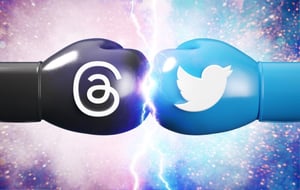Most of us perceive emojis as fulfilling a number of social roles, from providing empathy for others to advancing workplace efficiency and even enhancing mental health by making people feel better about themselves or their work.
July 17 was World Emoji Day, an unofficial holiday that celebrates how emojis have become part of our daily interactions with friends, family, and even people in business.
They may have started as funny things to have but Emojis have evolved a language of their own, that anyone around the world can speak, breaking into cultural and dialectal barriers.
Read: Design an Avatar for every persona
According to Adobe’s Future of Creativity 2022 report, US adults consider emojis to be useful for overcoming language barriers, and for finding easier ways to express themselves.
How open were these people to using emojis for tasks like confirming attendance to an event, for making financial transactions or describing how one felt when addressing a nurse or doctor? Many, but even more critical are the facts that the emojis we casually use are turning out to be ‘legally binding’ in business communication.

Laws on business Emojis
Judge Victor Marrero, a US federal court magistrate, ruled that emojis, specifically 🚀📈💰, count as investment advice. The New York district court judge wrote that even if the word “profit” isn’t directly mentioned in a text, the emojis depicting a rocket, upward trending graph and money bag “objectively mean one thing: a financial return on investment.”
A recent decision by a Canadian court ruled that emojis may no longer be treated as mere digital symbols that can be used or displayed casually, as they carry an intended business meaning.
The precedent took place when a grain buyer sent a text message to the farmers of a certain region offering to buy their fiber crop at a certain price per bushel.
One farmer replied with a “thumbs up” emoji message without any accompanying text. Despite the thumbs-up acknowledgment, the farmer refused to deliver crops at the stated price and the buyer sued him for breach of contract. The farmer argued he was not at fault because no formal contract had been entered into between them.
The Canadian court thought otherwise and ruled in favor of the buyer, ordering the farmer to pay damages. It said the “thumbs up” emoji is as valid as a signature and that courts “need to adapt to the ‘new reality’ of how people communicate.”
The decision may similarly apply to the “handshake”, “okay,” “yes” and “approved” emojis or other similar digital symbols, including funny “memes” that imply the sender’s agreement with the subject of the text message.

Gen Z emoji communication
Gen Zs explore new trends and new ways to use different symbols faster, sometimes combining several emojis to evoke a particular meaning.
Emojis for the younger generation go beyond mere text embellishment and turn into a form pf art to express oneself and convey moods, feelings or emotions but also for sounding less formal, asking for favors, and even ending a conversation.
Apps like Telegram and WhatsApp allow users to react to a message with emojis instead of text in a way that is completely acceptable. In fact, it is now being used by consumers in different ways, from purchasing products and making payments to creating exclusive online usernames and websites.
In Adobe’s latest emoji report, 55% of users globally are more willing to buy an item online where advertisers use an emoji.
Gen Z and Millennials are more likely to be interested in clothing purchases, followed by food and streaming subscriptions. Meanwhile, Millennials, Gen X and Baby Boomers are most likely to buy food using an emoji followed by clothing items.
As Gen Z becomes a larger part of the workforce, they will bring their memes and emoji vocabulary with them, creating a novel form of corporate communication.
They are more comfortable expressing their thoughts or feelings through GIFs, TikToks, emojis, memes, and abbreviations both in and outside of a work setting.
Almost 13% of Gen Z is already in the workplace and one-third of them will be part of the workforce by 2030.
A survey by Slack last year found that just 7% of employees always send a message to their boss accompanied by an emoji, and 32% of Gen Z participants said the recipient misunderstood an emoji they sent, creating a communication snafu with their older counterparts with good intentions lost in translation.
For example, for Gen Z, a crying emoji doesn’t mean sadness but most likely dying of laughter, the opposite of how it was understood.
Gen Z is the authority on Emojis, having been exposed to them from birth, but understanding the nuances in the way they use them could make a difference in how the future of business communication is shaped around them.
For more tech news, click here.








